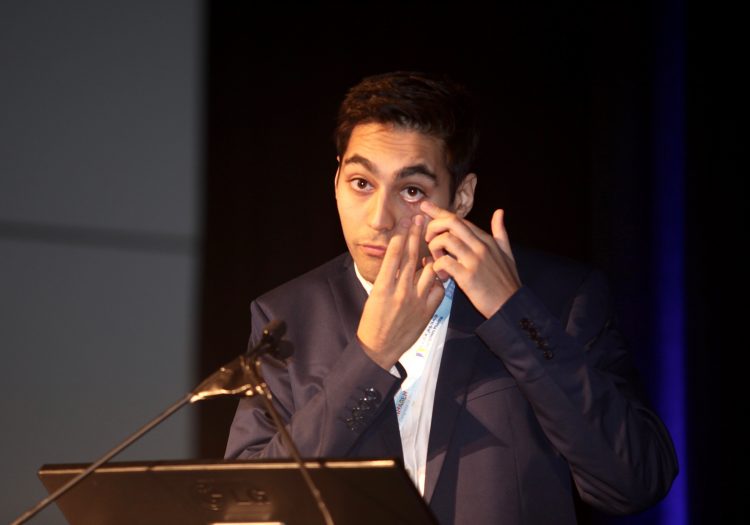Dry eye patients find relief at the tips of their fingers
 Dr Shafi Balal demonstrating the fingerprick technique at the XXXIV congress of the ESCRS
Dr Shafi Balal demonstrating the fingerprick technique at the XXXIV congress of the ESCRSA new approach for treating dry eye syndrome and persistent epithelial defects in which patients apply a pricked and bleeding finger tip to their eye appears to be safe and effective, according to the findings of a study presented by Shafi Balal MD at the XXXIV congress of the ESCRS.
“ Our small study suggests fingerprick autologous blood (FAB) is an effective alternative low-cost, readily accessible treatment for DES, and also for persistent epithelial defects,” said Shafi Balal MD, Moorfields Eye Hospital, London, UK.
He noted that the treatment appears to work by the same mechanisms as other blood-derived products, such as autologous serum, platelet-derived plasma which have shown promising results in clinical trials. However, those treatments have not been widely adopted owing to the expense and time-consuming nature of production.
In contrast, FAB involves almost no expense and simply requires patient s to wash their hand, sterilise their finger with alcohol and prick their finger- in the same way diabetic patients do to test their blood sugar levels-and then apply a drop of blood directly from their fingertip to their lower fornix.
Dr Balal’s study involving 12 patients with dry eye syndrome and three patients with persistent epithelial defects underwent FAB treatment four times daily for eight weeks and then were followed for a further four weeks.
They found that after eight weeks treatment the patients’ mean Oxford corneal staining grade improved from 3.67 to 2.33 (p<0.0001), tear break-up time increased from 5.24 seconds to 7.71 seconds and OCI score improved from 53.17 to 27 (p<0.001). There were also improvements in mean visual acuity and Schirmer’s scores, but they did not reach statistical significance. There were no complications .
Four weeks after treatment cessation mean Oxford Staining grade, OCI and tear break up time all worsened. However, persistent epithelial defects had resolved after one month of treatmen, Dr Balal said.
Published
Wednesday, January 10, 2018
Category